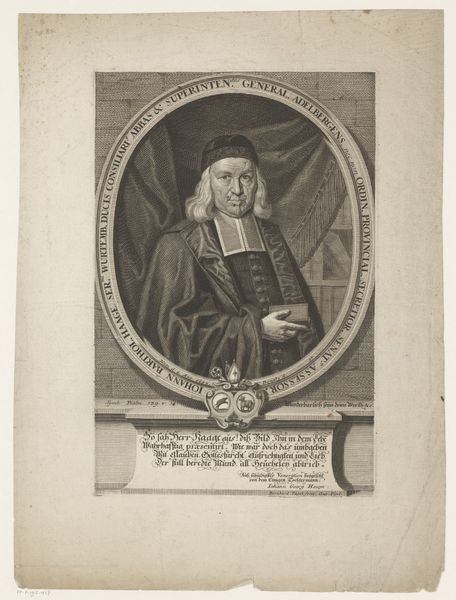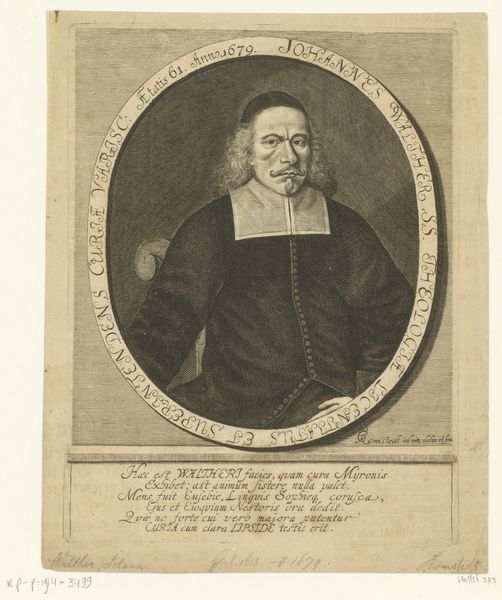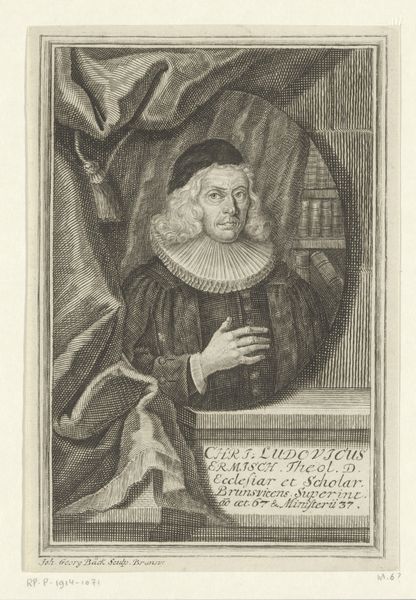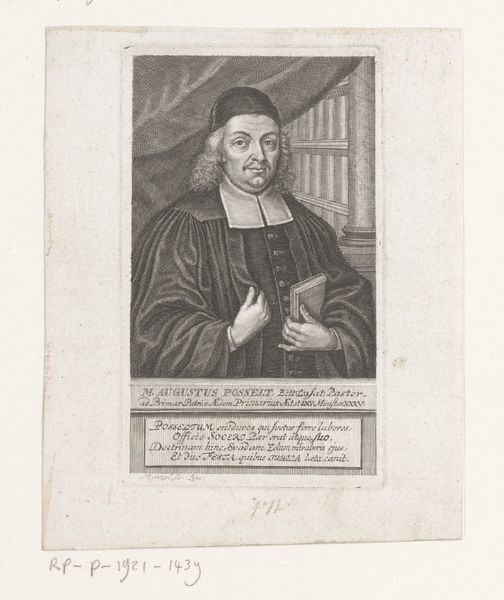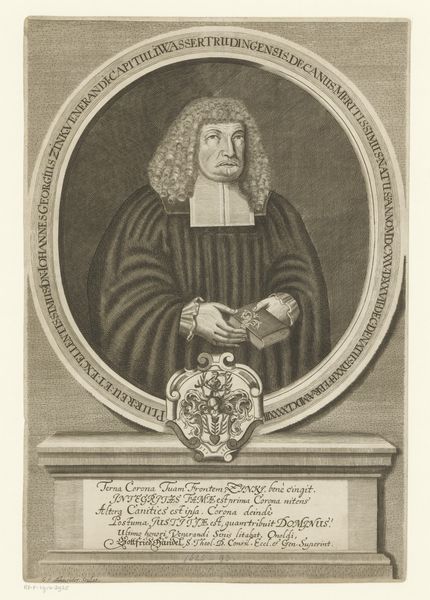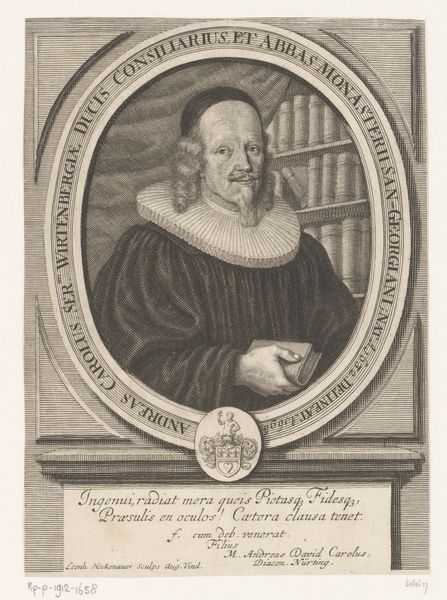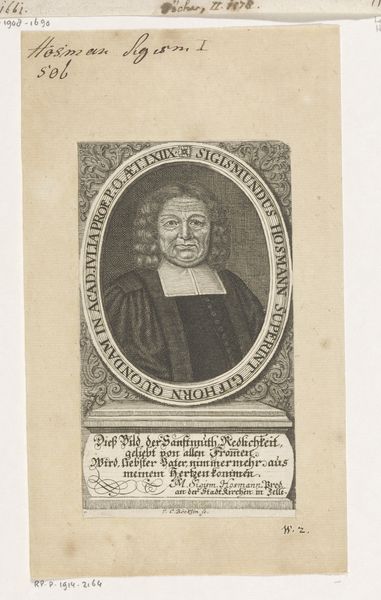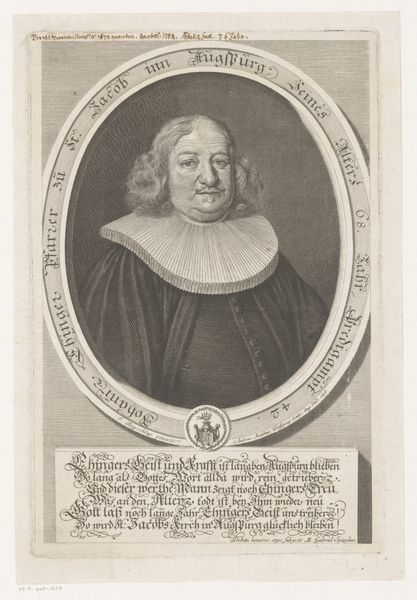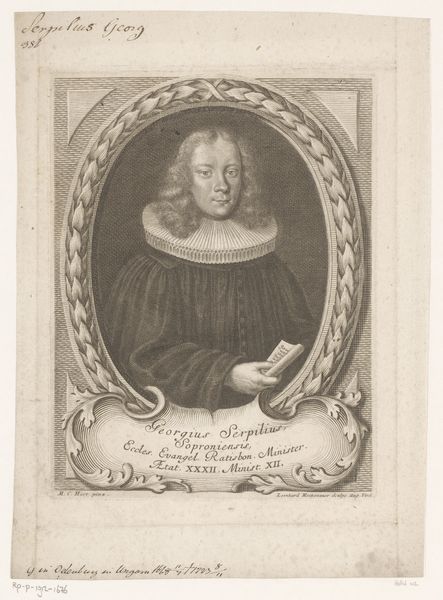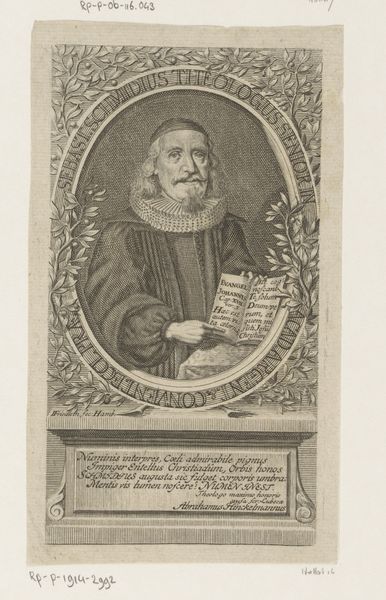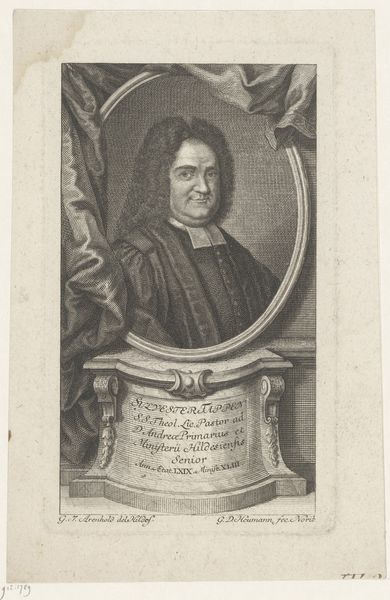
engraving
#
portrait
#
baroque
#
old engraving style
#
line
#
portrait drawing
#
history-painting
#
engraving
#
columned text
Dimensions: height 183 mm, width 146 mm
Copyright: Rijks Museum: Open Domain
Curator: Standing before us is a portrait of Jean D'Espagne, crafted by Johann Christoph Boecklin in 1699. The artwork is an engraving and is now part of the Rijksmuseum collection. Editor: It strikes me immediately as very austere. The circular frame, the subject's dark clothing against the pale paper... it feels almost intentionally restrained. Curator: The restraint you're picking up on likely reflects the medium. Engraving, unlike painting, demands precision and careful labor. Consider the sheer time and skill required to create such detail with lines, it certainly represents a particular kind of craft. Editor: Absolutely. The intricate linework gives a remarkable sense of texture to his robes, but how do the material limitations actually enhance the subject, do you think? Curator: In his time, D'Espagne was a significant religious figure—a Protestant theologian, pastor, and writer, so Boecklin has not only created his image but also had to find an efficient system to allow the dissemination of his subject's profile. This portrait, reproduced, and sold as engravings speaks to a burgeoning culture of print and how celebrity profiles are developed and then traded like a common resource. Editor: I agree. Yet, aesthetically, the circular composition framed by the laurel wreath adds a touch of classicism, giving D’Espagne a certain dignity, almost hero-like, even within such rigid geometric confines. Curator: I also think we need to consider that the lettering and framing act like supporting textual devices, offering both biographical and context insights in one place for the common user. The inscription below the image speaks to D’Espagne's piety and diligence, it adds to the intended representation. Editor: It does. Now, thinking about it holistically—form and context hand-in-hand—that austere feeling suddenly conveys the weight of scholarly or perhaps even spiritual gravitas, doesn’t it? Curator: Precisely. Examining this engraving illuminates both the subject and the era, revealing the intersection of religious identity, print culture, and the artist's method. Editor: A fascinating example of how much can be conveyed through the limitations and the advantages of line, form, and the printing press itself.
Comments
No comments
Be the first to comment and join the conversation on the ultimate creative platform.
